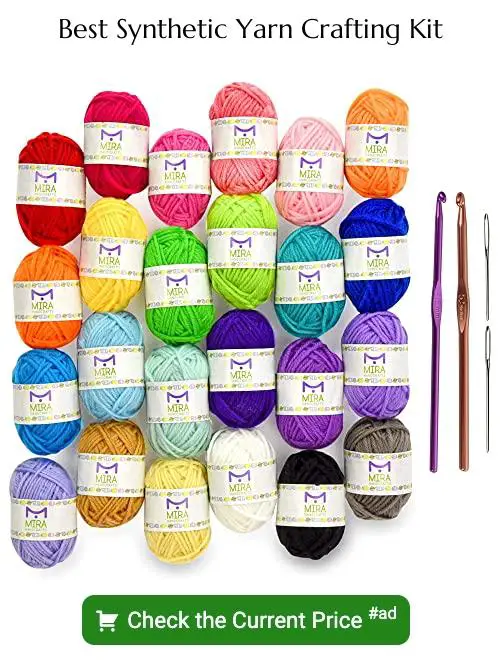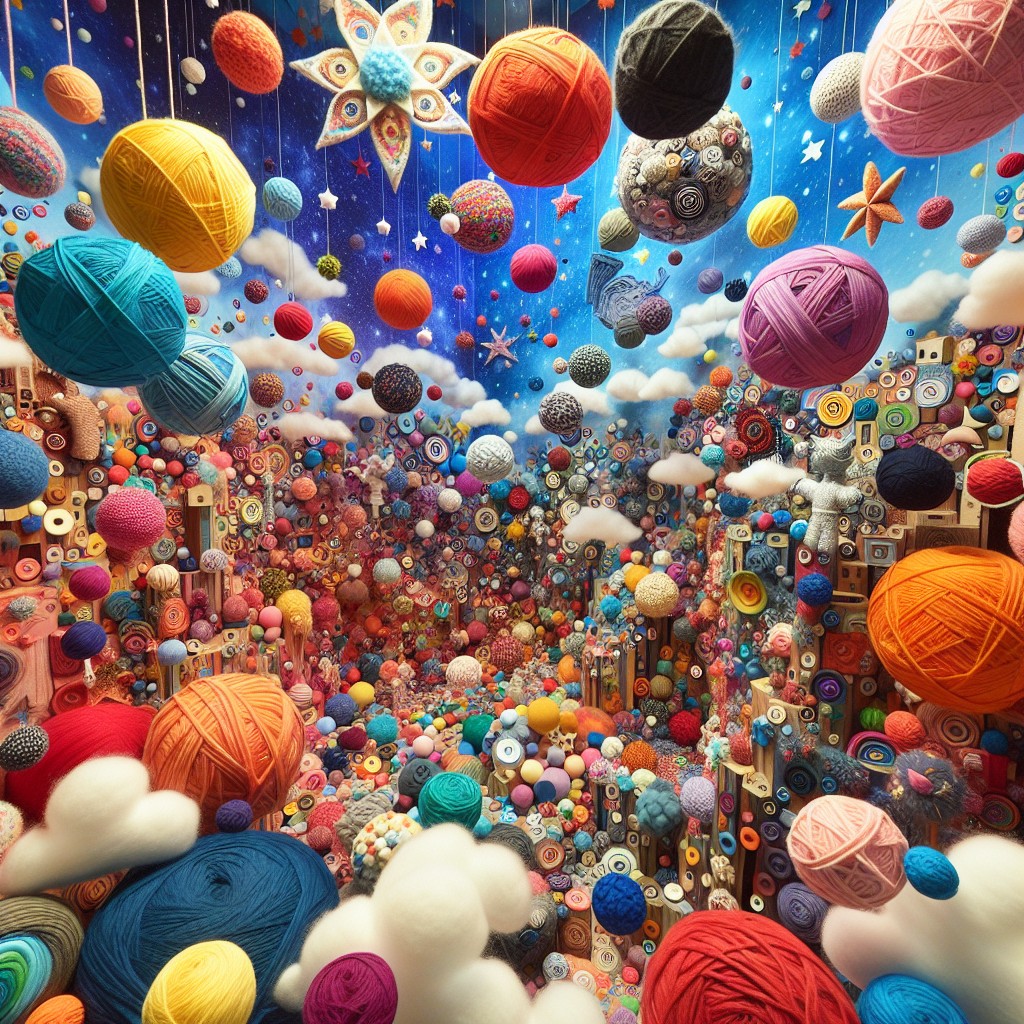Dive into an analysis of the ever-evolving synthetic yarn market, exploring key trends, prominent players, and significant developments that are shaping its future.
Diving into the world of synthetic yarns, it’s fascinating to explore the market statistics that reveal the growth, trends, and future predictions of this industry.

Synthetic yarns, such as acrylic, nylon, and polyester, have a significant role in the textile industry due to their unique characteristics like durability, resistance to moths, and affordability.
In recent years, the synthetic yarn market has seen substantial growth, driven by factors such as technological advancements, increasing demand in various sectors like apparel, home furnishing, and automotive.
This article will provide a comprehensive look at the synthetic yarn market statistics, including market size, key players, regional analysis, and future projections.
Stay tuned for a detailed exploration of these intriguing statistics.
The global synthetic yarn market is at $174.16 billion this year at a CAGR of 8.1%
Currently trending at a compound annual growth rate (CAGR) of 8.1%, the synthetic yarn trade garners a formidable $174.16 billion. Factors such as material innovation, increased demand in industries like apparel, home furnishing, and automotive, plus manufacturing advancements contribute to this remarkable growth.
Rapid urbanization and increasing consumer spending on clothing and home decor are likely to further fuel the market expansion in the coming years.
Polyester consumption will be approximately 3x more than cotton fiber by 2030
As textile industries continue to thrive, polyester stands out amongst synthetic fibers. Major contributing factors to its dominance include cost-effectiveness, durability and versatility in production. According to recent projections, polyester use is expected to triple compared to cotton fiber by the end of this decade. Considering global supply chains and consumer demands, this surge is poised to have significant implications on the entire textile industry.
Environmental impacts are to be considered too, as the production, usage, and disposal of synthetic textiles poses a series of ecological challenges, although efforts are already in place to mitigate these effects.
Polyester is the number 1 commonly used synthetic fiber used in the US
In the United States, polyester outpaces other synthetic yarns in consumption. This pattern can be attributed not only to the fiber’s versatility but its durability and wrinkle-resistant qualities as well. It renders excellent color retention, essential for brightly colored yarn crafts. Additionally, it’s an economical option, which appeals to a wider variety of consumers, from hobbyists to professional crafters. However, it’s important to note its environmental impact, as the production process involves petroleum, and the fiber is not biodegradable.
Synthetics derived from petrochemicals comprise 62% of all fibers produced
Synthetics, primarily petrochemical-based, make up a substantial majority of all fibers in production today. This statistic is considerable, illustrating the prominent role of such materials in the market.
The dominance of these synthetics is attributed to their versatility, durability, and cost-effectiveness. Typically, these fibers have qualities that make them suitable for a variety of yarn crafts, including knitting and crocheting.
Despite their many advantages, it should be acknowledged that the environmental implications of their production and disposal continue to be a concern that needs addressing.
Lubrizol Corporation and Glen Raven are the major players in the Synthetic Yarn Market in the US
In the U.S. market, Lubrizol Corporation and Glen Raven significantly lead in the production of synthetic yarn. Lubrizol, a specialty chemicals company, offers a diverse range of synthetic fibers. These fibers, known for their quality and durability, are used across various sectors including apparel, home textiles, and automotive industries.
Glen Raven, on the other hand, is renowned for its innovative approach to synthetics. With heavy investment in research and development, its products continually set new benchmarks in the industry. The company’s Sunbrella fibers, for instance, changed the game with their long-lasting, UV-resistant properties. Their product lines cater to a myriad of applications, from outdoor furniture to marine upholstery.
Being substantial contributors to the U.S. market, these companies’ trajectory helps shape the course of the synthetic yarn industry.
60% of all textiles today are synthetic
As the textile industry evolves, there’s been a considerable shift towards the use of synthetic fibers. These man-made materials, which include the likes of polyester, acrylic and nylon, currently make up about 60% of the global textile output.
The increased preference for synthetic textiles is largely attributed to their durability and versatility. Additionally, they often prove more affordable and are readily available compared to natural alternatives.
Despite these advantages, environmental concerns have been rising given the non-biodegradable nature of several synthetic fibers.
Polyesters and nylon are biodegraded in 3 to 4 months
Surprisingly, both polyesters and nylon break down naturally within a relatively short span of time, usually 3 to 4 months. This biodegradation process occurs when these materials are exposed to environmental elements such as sun, rain, and soil microorganisms.
However, conditions significantly influence the rate at which these synthetic materials decompose. Microorganisms responsible for the breakdown thrive in warm, moist conditions, therefore, in cooler or drier environments, the process may take substantially longer.
Also, it’s essential to note that while these materials do eventually break down, they are not completely eco-friendly. They leave behind microplastics that can contaminate both terrestrial and aquatic ecosystems.
Studies show that 5.6 million tons of synthetic microfibers have entered the environment since 1950s
An alarming volume of synthetic microfibers, approximately 5.6 million tons, has been released into our ecosystems since the 1950s. These microfibers are minuscule particles that shed from synthetic materials during production, usage, and washing. Now ubiquitously found in aquatic and terrestrial habitats worldwide, they pose significant environmental challenges.
Synthetic yarns like polyester and nylon are the main sources of these microfibers. The high durability of these materials leads to their persistence in the environment, thereby escalating the adverse effects. Scientists have discovered microfibers in the deepest trenches of the oceans, inside marine creatures, and even within the human body via food and water.
Addressing this pervasive problem requires collective efforts on diverse fronts. Technological advancements in the manufacturing process, consumer education about sustainable washing practices, improved wastewater treatment protocols, and responsible disposal can all contribute to reducing the overall load of microfibers in the environment. With heightened awareness of the issue comes the potential for solutions, signifying a crucial step towards a more sustainable future for the synthetic yarn industry.
Laundering synthetic fabrics puts 2.2 million tons of microplastics into the ocean each year
Every year, microplastics resulting from laundry processes exacerbate oceanic pollution. Synthetic textiles shed these minuscule particles during regular washing cycles. Despite their diminutive size, microplastics pose colossal environmental challenges.
Water treatment facilities often lack capability to filter these microplastics effectively. Hence, a significant amount ends up in our oceans. It is estimated that approximately 2.2 million tons of these pollutants enter the ocean annually through laundry activities alone. The resulting marine pollution impacts virtually all oceanic ecosystems and can affect marine life at every level, from plankton to whales.
Efforts are underway to develop more effective filtration systems at water treatment plants to curb this problem. In the meantime, consumers are encouraged to wash synthetic garments less frequently and consider using products designed to capture microfibrics in the wash. Constant awareness and active mitigation can reduce the impact of synthetic yarns on our oceans.
Pollution from textiles along is equivalent to 50 billion plastic bottles
A staggering environmental cost comes with the production of synthetic yarns. The level of pollution that results from textile manufacturing matches the toll taken by about 50 billion plastic bottles. This comparison effectively illustrates the enormous environmental impact.
Produced primarily from materials like polyester and nylon, synthetic yarns contribute to microplastic pollution. Waste enters not only our landfills but also our oceans, severely disrupting ecosystems. Thus, a critical need arises for sustainable alternatives and more eco-friendly manufacturing processes in the synthetic yarn industry.
Measures such as recycling, waste management, and green production methods can significantly help mitigate this environmental impact.
References:
- https://www.globenewswire.com/
- https://sustainablebrands.com/
- https://www.precisionbusinessinsights.com





